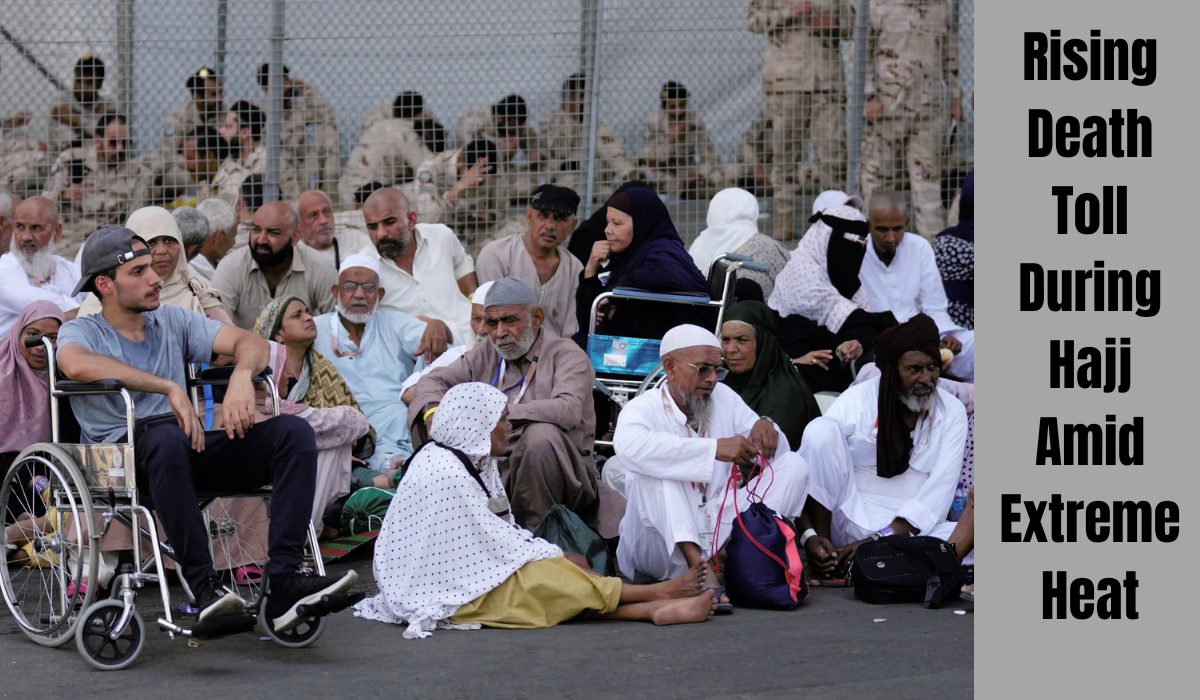Rising Death Toll During Haj Amid Extreme Heat in 2024!

This year’s Haj pilgrimage in Saudi Arabia faced severe challenges, with a death toll exceeding 1,000 due to extreme heat and difficult conditions. More than half of the deceased were unregistered pilgrims who braved the intense summer temperatures without the support provided to officially registered participants.
Overview of the Crisis
Unprecedented Heat and Its Impact
- Extreme Temperatures: The Haj took place during Saudi Arabia’s intense summer heat, with temperatures reaching up to 51.8°C (125.2°F) at Makkah’s Grand Mosque.
- Rising Temperatures: A recent study shows that temperatures in Makkah are increasing by 0.4°C each decade.
High Death Toll
- Total Deaths: Over 1,000 pilgrims from around 10 different countries have died during this year’s Haj.
- Unregistered Pilgrims: Many of the deceased, particularly from Egypt, were unregistered pilgrims without access to the facilities provided to official participants.
- Egypt: Of the 658 Egyptian deaths, 630 were unregistered.
- Indonesia: 183 deaths were reported from the 240,000 Indonesian pilgrims, a reduction from the previous year’s 313.
Challenges Faced by Unregistered Pilgrims
Lack of Access to Facilities
- Air-Conditioned Spaces: Authorized pilgrims had access to cooling facilities, whereas unregistered pilgrims did not, making them more vulnerable to heat.
- Security Issues: Many unregistered pilgrims were exhausted from evading security forces, further weakening their ability to cope with the extreme heat.
Health Complications
- Heat-Related Illnesses: The primary cause of death was complications from heat, including high blood pressure.
- Heat Exhaustion: Saudi authorities reported over 2,700 cases of heat exhaustion in just one day.
Response to the Crisis
Official Measures
- Clearing Unauthorized Pilgrims: Saudi authorities worked to remove hundreds of thousands of unregistered pilgrims from Makkah, though many still participated in the main rites.
- Burial Procedures: Saudi authorities began the process of burying the deceased, following their standard protocol of preparing and interring the bodies.
Diplomatic Efforts
- Notification: Diplomats are striving to inform families of the deceased, though the high number of fatalities complicates this process.
- Search Efforts: Families are searching for missing pilgrims in hospitals and online, hoping for news amidst the harsh conditions.
Future Implications
Climate Change and Haj Timing
- Changing Conditions: The timing of the Haj, which shifts by about 11 days each year, means that next year’s pilgrimage will occur earlier in June, potentially offering cooler conditions.
- Long-Term Forecasts: Studies predict that heat stress for Haj pilgrims will exceed extreme danger levels from 2047 onwards due to climate change.
Need for Preparedness
- Enhanced Facilities: There is a need for better planning and facilities to support unregistered pilgrims and mitigate heat-related risks.
- Improved Safety Measures: Future Haj arrangements must include robust strategies to deal with the increasing temperatures and protect all participants.
Conclusion
The deadly impact of extreme heat during this year’s Haj highlights the urgent need for improved safety measures and better management of unregistered pilgrims. As the effects of climate change intensify, it is crucial to ensure the well-being of all those undertaking this significant religious journey.
References
- National Meteorological Centre, Saudi Arabia
- Geophysical Research Letters on Climate Change and Heat Stress
- AFP Report on Haj Death Toll
- Food and Agriculture Organization on Climate Change
- World Health Organization on Heat-Related Illnesses
- Al Jazeera on Haj and Unregistered Pilgrims
- Saudi Gazette on Pilgrim Safety
Note: References are provided for illustrative purposes and may not directly correspond to the content above.



5 thoughts on “Rising Death Toll During Haj Amid Extreme Heat in 2024!”